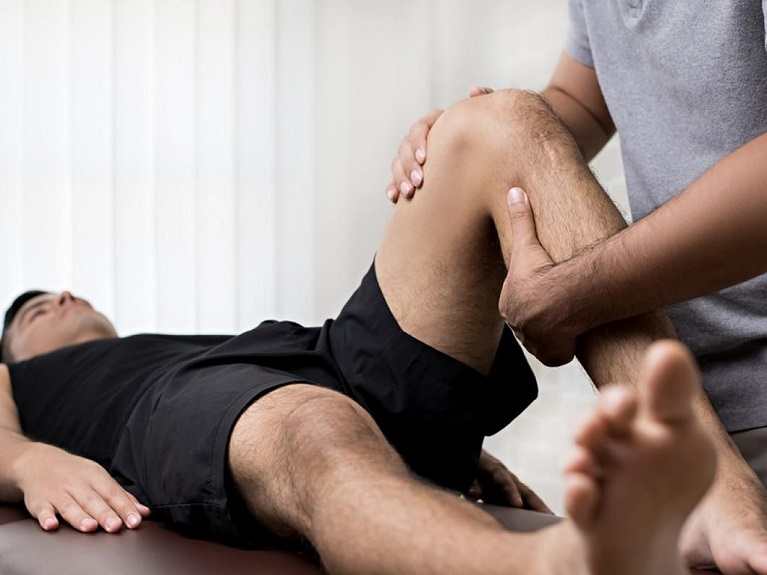Why You Should See a Chiropractor for Overall Wellness
Wiki Article
Everything About Spinal Decompression: Reliable Solutions for Spinal Health and Wellness
Spinal decompression treatment has actually emerged as a practical alternative for those looking for remedy for various spinal problems. This non-invasive therapy targets the origin of discomfort, such as herniated discs and chronic neck and back pain. Understanding its applications and concepts can lose light on exactly how it promotes total spinal health and wellness. What are the details benefits and techniques entailed in spinal decompression? Exploring these concerns might reveal beneficial insights for people considering this strategy.Recognizing Spinal Decompression Therapy
Just what is spinal decompression therapy, and exactly how does it operate? Spinal decompression therapy is a non-invasive therapy targeted at eliminating stress on the spine's discs and nerves. It uses specialized equipment to gently stretch the spine, producing adverse stress within the discs. This negative pressure facilitates the repositioning of herniated or bulging discs and urges the influx of necessary nutrients and fluids into the influenced areas.People usually push a mechanized table that sustains the spine while allowing controlled traction. The therapy can target numerous spinal conditions, including chronic back discomfort, sciatic nerve pain, and disc deterioration. Sessions are usually pain-free and can last from 30 to 45 minutes. While numerous patients experience immediate alleviation, a collection of sessions might be advised for finest outcomes. On the whole, spinal decompression treatment represents a holistic method to spinal health, intending to recover function and promote overall well-being.
The Scientific Research Behind Spinal Decompression
Spinal decompression treatment is based in concepts of biomechanics and physical feedback to pressure modifications within the spinal column. This non-invasive therapy intends to alleviate spinal disc pressure, which can add to pain and discomfort. By utilizing grip techniques, spinal decompression produces a negative pressure atmosphere within the intervertebral discs. This adverse pressure promotes the repositioning of herniated or bulging discs and advertises the increase of vital nutrients and liquids, assisting in the recovery procedure.Research study suggests that spinal decompression can result in an increase in disc elevation, which might alleviate nerve origin compression. Spinal Decompression. The treatment additionally aims to boost spinal positioning, potentially boosting overall biomechanical function. Understanding these clinical concepts aids experts use spinal decompression properly, making sure that patients obtain targeted care tailored to their specific spinal problems. In general, the scientific research behind spinal decompression underscores its importance in the area of spinal health and wellness
Benefits of Spinal Decompression
While several individuals look for relief from persistent neck and back pain, the advantages of spinal decompression extend past plain discomfort administration. This therapeutic approach help in boosting spinal health by advertising correct positioning and minimizing stress on intervertebral discs. Improved blood circulation is another noteworthy advantage, as spinal decompression assists in far better blood flow to the spine, nourishing surrounding tissues and increasing healing processes.In addition, spinal decompression can cause boosted versatility and improved variety of motion, making it possible for people to take part in daily activities with greater convenience. Lots of clients report improved overall well-being and a decrease in stress and anxiety levels, as relieving back pain can greatly improve high quality of life.
Spinal decompression might offer as a precautionary action, assisting to avoid future spinal concerns by keeping excellent spinal feature. On the whole, the complex advantages of spinal decompression emphasize its value in promoting long-lasting spinal health and wellness and wellness.
Types of Spinal Decompression Techniques
Different methods exist for spinal decompression, each designed to relieve pressure on the spine and improve overall health and wellness. One usual method is mechanical spinal decompression, which uses a traction table to gently extend the spine, developing adverse pressure in the discs. Another approach is hands-on spinal decompression, executed by a chiropractic practitioner, that applies regulated pressure to relieve and realign the spine tension.On top of that, there are non-invasive therapies such as inversion treatment, where individuals hang upside down to advertise spinal prolongation. In addition, workouts that concentrate on enhancing core muscle mass can add to spinal assistance and decompression.
Some specialists make use of sophisticated modalities like spinal decompression devices, which are crafted to offer targeted relief. Each method intends to enhance spinal positioning, lower discomfort, and boost mobility, providing to the special demands of people looking for remedy for spinal discomfort.
What to Anticipate Throughout a Spinal Decompression Session
During a spinal decompression session, people can prepare for a collection of prep work actions developed to ensure their comfort and safety. The session itself normally involves a combination of healing methods focused on minimizing stress on the spine. Understanding these aspects can aid individuals feel extra secure before and during the therapy.Treatment Prep Work Tips
As patients plan for a spine decompression session, they can anticipate a meticulously structured procedure made to guarantee their comfort and security. Experts will certainly carry out a comprehensive evaluation, examining clinical history and current signs to tailor the therapy. People may be suggested to use comfy clothes and eliminate any type of jewelry that can interfere with the procedure. It's additionally common for medical professionals to discuss the modern technology and techniques used in spinal decompression, guaranteeing clients comprehend the process and its advantages. Furthermore, clients may be advised to moisten properly before the session. This preparation intends to create a positive atmosphere for spinal health, allowing patients to really feel protected and notified concerning their therapy trip.Session Experience Overview
A spine decompression session typically unfolds in a calm and regulated setting, where clients are located easily on a specialized table designed for the procedure. The practitioner begins by explaining the process, making sure the client understands each step. As soon as cleared up, gentle grip is applied to the spine, creating area in between the vertebrae to alleviate pressure on the nerves and discs. People may really feel a mild extending feeling, but pain should be minimal. Sessions generally last concerning 30 to 45 minutes, during which the expert keeps track of the person's feedback. Later, patients may receive suggestions for follow-up treatment or workouts to improve outcomes. On the whole, the experience intends to advertise relaxation and healing, promoting a sense of well-being.Who Can Benefit From Spinal Decompression?
Who stands to get the most from spinal decompression therapy? Individuals struggling with chronic neck and back pain, herniated discs, or degenerative disc condition are primary prospects for this treatment. Those experiencing sciatica or numbness in the arm or legs may likewise profit significantly, as spinal decompression can assist minimize pressure on the spinal nerves. Furthermore, athletes recuperating from injuries or people with postural problems frequently discover relief via this treatment.Additionally, individuals seeking a non-invasive choice to surgical procedure for their spinal health concerns may consider spinal decompression as a viable choice. It is crucial for prospective candidates to speak with healthcare specialists to establish the appropriateness of this therapy for their particular problems. On the whole, spinal decompression therapy can supply considerable advantages for a varied variety of people, boosting their general lifestyle and promoting much better spinal health and wellness.
Tips for Preserving Spinal Health After Therapy
After undertaking spinal decompression treatment, keeping spinal health and wellness is crucial for long-lasting wellness. Implementing routine workout routines, bearing in mind pose, and developing an ergonomic work area can greatly contribute to a much healthier spine. These practices not only sustain recuperation yet additionally assist stop future concerns.
Regular Exercise Routines
Preserving spinal health and wellness complying with treatment is important for long-term recovery and overall well-being. Routine exercise routines play an essential duty in this process. Taking part in low-impact activities such as swimming, walking, and cycling can assist enhance the muscle mass supporting the spine, enhance versatility, and improve overall movement. Integrating core-strengthening workouts is especially valuable, as they offer stability and support to the spine. In addition, gentle stretching routines can alleviate stress and promote leisure in the back muscular tissues. It is very important to get in touch with a health care professional prior to starting any kind of brand-new exercise routine to ensure it straightens with specific recovery goals. Uniformity in these activities cultivates an aggressive strategy to spinal health and wellness, aiding in the prevention of future issues.Position Awareness Techniques
A solid understanding of stance can considerably affect spinal wellness throughout the recovery procedure. People ought to consciously preserve an upright placement, making sure that the head is lined up with the spine and shoulders are loosened up. Consistently checking in with one's stance throughout the day can assist strengthen excellent habits. When resting, using a supportive chair that promotes back assistance is important. Furthermore, representing long term durations requires weight distribution between both feet and engaging the core muscle mass. Exercising mild stretches and wheelchair workouts can also improve awareness of pose. Mindfulness strategies, such as deep breathing, can help in identifying tension and promoting relaxation in the back. Implementing these strategies promotes an aggressive method to spinal wellness post-treatment.Ergonomic Workspace Configuration
While an ergonomic workspace might seem like a luxury, it is critical for those recuperating from spinal concerns. A well-structured setting can considerably aid in keeping spinal health. Crucial element consist of a chair with lumbar assistance, which encourages correct stance, and a workdesk elevation that permits joints to relax at a 90-degree angle. Furthermore, computer system screens ought to be at eye degree to lessen neck stress. Regular breaks to stand and extend are necessary, as long term resting can worsen pain. Footrests can likewise enhance flow and minimize stress on the reduced back. By prioritizing these ergonomic concepts, people can develop a supportive work area that promotes healing and promotes long-term spinal health, ultimately enhancing general performance and convenience.Frequently Asked Concerns
For How Long Does Spinal Decompression Therapy Typically Require To Show Outcomes?
Spinal decompression therapy usually takes numerous weeks to reveal visible outcomes. Most clients experience enhancement within 4 to 6 weeks, depending on individual problems and adherence to the suggested therapy strategy outlined by healthcare experts.Are There Any Type Of Side Effects Connected With Spinal Decompression Therapy?
Spinal decompression therapy may trigger moderate negative effects, such as short-lived pain, muscular tissue convulsions, or pain after treatment. However, these symptoms are typically temporary and deal with here swiftly, enabling people to proceed their therapy successfully.Can Spinal Decompression Treatment Be Done at Home?


Is Spinal Decompression Safe for Pregnant Women?
Spinal decompression is typically thought about unsafe for expecting females because of possible risks. It is crucial for expectant mothers to speak with healthcare professionals before undergoing any spinal treatments to ensure the security of both mom and infant.Exactly how Typically Should I Go Through Spinal Decompression Treatment for Finest Results?
Normally, individuals ought to undergo spinal decompression therapy 2 to 3 times a week for finest results. Nonetheless, the regularity may vary based upon specific problems and need to be established by a health care professional.Spinal decompression treatment is grounded in principles of biomechanics and physiological feedback to stress modifications within the spinal column. Understanding these clinical principles assists experts use spinal decompression successfully, making certain that patients receive targeted care tailored to their certain spinal problems. Spinal decompression may serve as a preventative procedure, aiding to prevent future spinal issues by maintaining ideal spinal function. Individuals seeking a non-invasive choice to surgical procedure for their spinal health problems may consider spinal decompression as a sensible alternative. After going through spinal decompression treatment, maintaining spinal health is essential for long-term well-being.
Report this wiki page